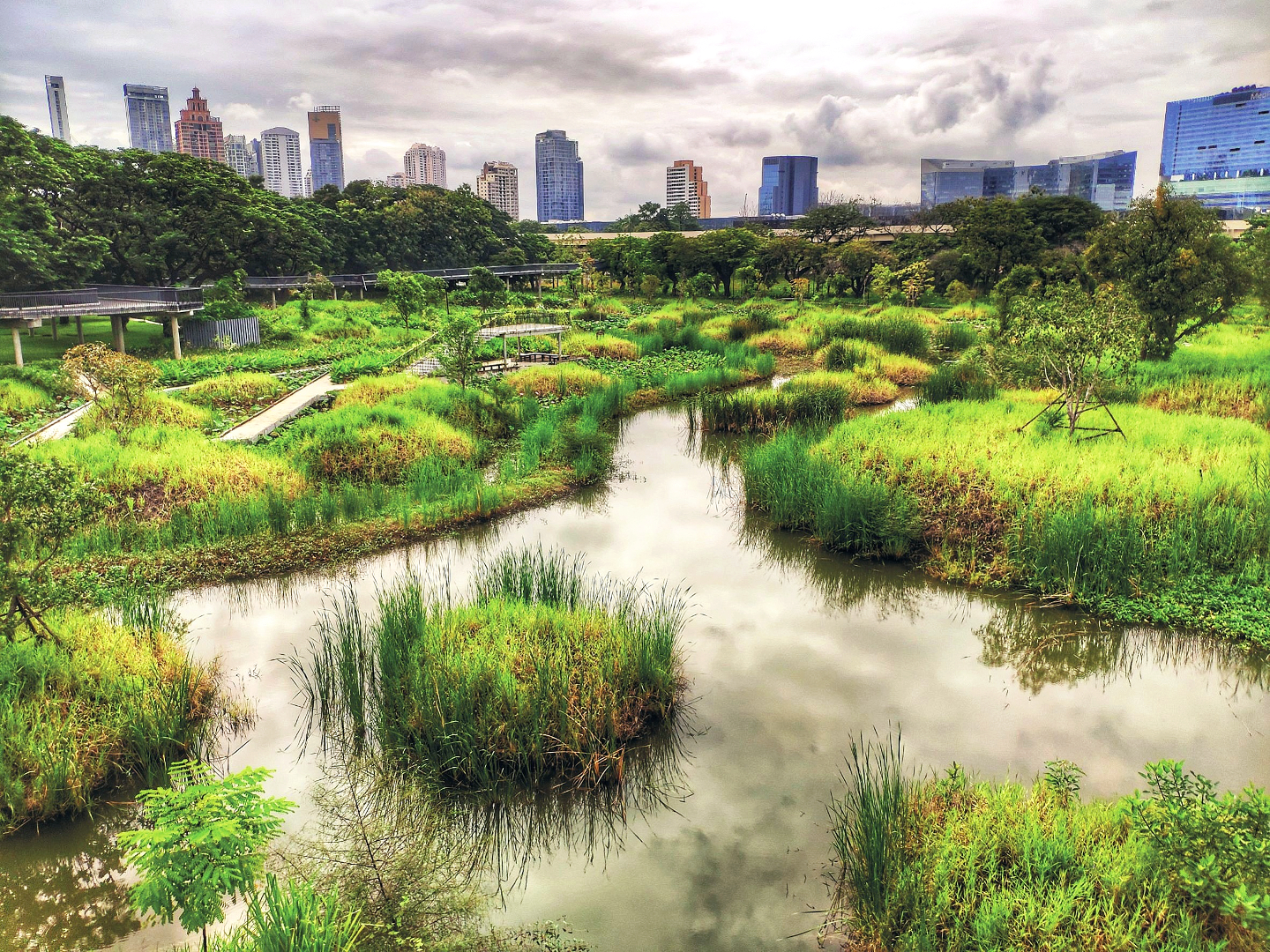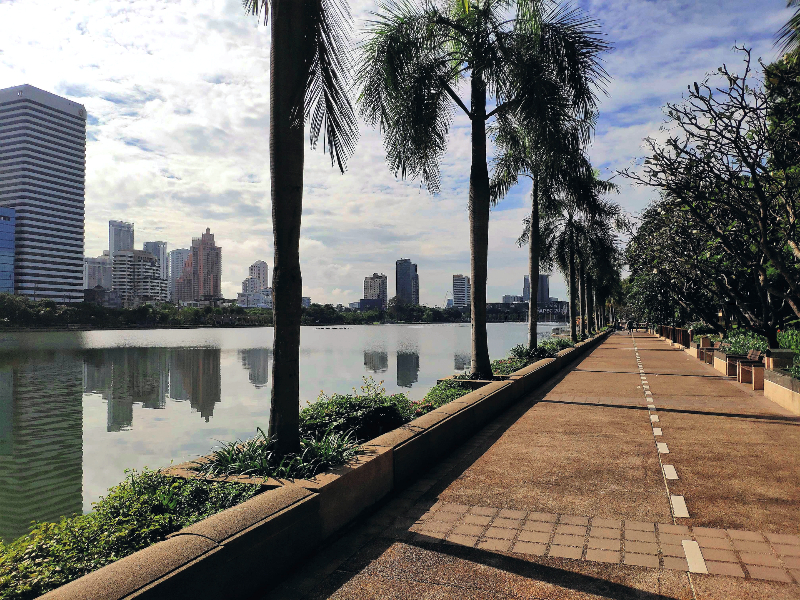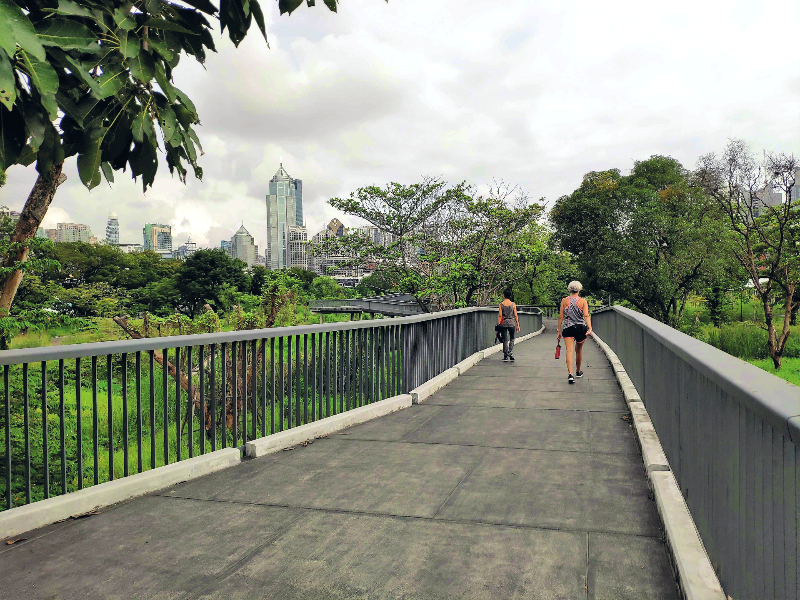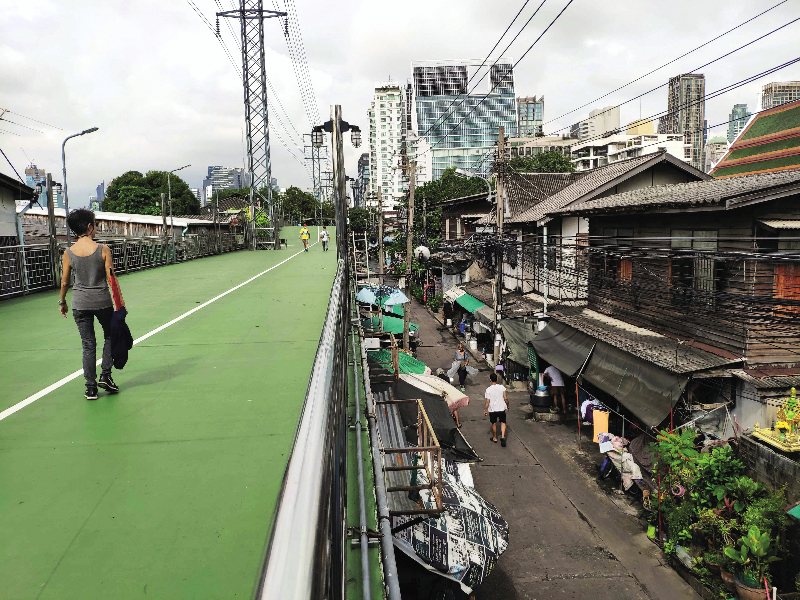
Benjakitti Park now occupies 480,000 sq m, surpassing Lumpini Park as the largest in Bangkok (All photos: Lee Yu Kit)
Earbuds firmly in his ears, the hotel guest was stodgily plodding away on the single treadmill in the hotel gym. It was obvious that I would not get to use the machine that morning, so I looked online for a route nearby for a run. That was how I discovered the huge Benjakitti Park across the road, smack in the middle of Bangkok.
According to the Bangkok Metropolitan Administration (BMA), green space in the Thai capital averages 6 sq m per resident — below the World Health Organization’s (WHO) standard of 9 sq m per person.
(Interestingly, a study by Universiti Putra Malaysia finds that the green space in Kuala Lumpur is a meagre 8 sq m per person, a number which has declined in the last decade. Neighbouring land-scarce Singapore, with one of the highest population densities in the world, has 66 sq m of urban greenery per person.)
While the benefits of public parks and greenery in an urban environment are well known — such as being good for the mental and social health of residents — cities worldwide often struggle to find the balance between development and the need for green open spaces.
The BMA has set a target of achieving the WHO standard by 2030, with Benjakitti Park being part of the initiative to achieve that goal.
Built on land previously occupied by the Tobacco Authority of Thailand (TOAT), the park was officially opened in 2004 in honour of the 72nd birthday of Queen Sirikit (mother of the present King of Thailand).
running_track.jpg

After crossing the busy Ratchadapisek Road on an overhead pedestrian bridge, I entered the park and was instantly transported to an urban oasis. The sounds of traffic became less audible and the air, cooler and fresher.
There was an inviting running track around the roughly rectangular 800m by 200m Lake Ratchada, whose shimmering surface reflected the skyscrapers outside the park’s boundary. As I jogged around the lake, I could see workers assiduously sweeping and scrubbing the track, paddle boats moored at one end of the lake and a monitor lizard slithering sinuously across the surface of the calm water.
Park benches, rubbish bins, fountains and an elevated amphitheatre were among the facilities I passed as I ran to the far end of the lake. I could also see the Queen Sirikit Convention Centre beside the park. A few people were practising yoga in the grassy amphitheatre. The side of the lake that was further away from the city had mature greenery, with walking and cycling paths that vanished under the shadows cast by big trees.
To celebrate the Queen’s birthday in 2006, a major extension to the park was approved. With its completion — it was opened to the public recently — Benjakitti Park now occupies 480,000 sq m, surpassing Lumpini Park as the largest in Bangkok.
Contiguous to the original, the extension — known as Benjakitti Forest Park — is an ambitious and fresh approach to creating urban green spaces. A metal fence, punctuated by gates, separates the new area. It has a different feel and concept from the older side, being more contemporary with more open spaces and shrubbery and fewer mature trees. The jogging tracks there are longer and straighter with less cover, encouraging longer, faster runs, in contrast to the looping, irregular tracks in the older section that are more suited to leisurely strolls.
Several keen runners and cyclists were already there at the early hour, working up a sweat.
walkers.jpg

In total there are 5.8km of footpaths, 2.8km of jogging tracks and 3.4km for cyclists in the park extension. It has four ponds, an amphitheatre, an outdoor stage and buildings previously occupied by TOAT that have been repurposed as a museum.
Towards the northern end of the Benjakitti extension is a forest park, with some 1,700 existing, mature trees. An additional 7,000 trees will be planted to create a forest within the park within the city. Straight walkways traverse the forest park area, with neat rows of newly planted varieties of native trees on either side. It was quiet when I was there, with only the sound of leaves being swept by the workers.
The rows and rows of young trees will grow in time to become a variegated canopy of a forest, providing a green retreat from the urban jungle as well as an area for students and members of the public to appreciate a forest ecosystem without having to leave the city.
The new park extension is often referred to as the Benjakitti Forest Park, but there are also references to the Benjakitti Wetland Park, for both types of ecosystems exist there.
To mimic a natural wetland, the park’s designers placed mounds of soil in the area with narrow waterways between them. As plants and trees grow on these mounds, “tiny forests” will spring up, the roots absorbing water and the foliage slowing down water evaporation, resulting in cooler ground temperatures.
Water lilies, lotus and rushes sprout in the narrow waterways. Compared to a traditional urban park, the proliferation of native plants means little maintenance is required. During the hot and dry season, the wetland may become brown, but it will turn lusher and greener during the wet season, with a capacity to absorb some 128,000 cu m of storm water.
Water for the wetland is drawn from a nearby klong, one of the many waterways that crisscross Bangkok. The water plants absorb nutrients from the water and naturally filter and clean it.
greenbridge2.jpg

The wetland is best appreciated from the park’s skyway, an irregular elevated walkway that allows visitors to view the area from a higher vantage point. There are also cement trails for those who want to venture into the park at ground level. These branch away from the main jogging tracks as narrow walkways.
The skyway is best visited in the early morning or at dusk, as it is constructed from concrete with no overhead foliage or roof. Consequently, it provides a feeling of expansiveness but could get uncomfortably hot during daytime.
Running for about 2km within the park, the skyway affords views of a marshland surrounded by the tall buildings of the city. The park is so extensive that being inside it feels like one is outside the city looking towards it, rather than being in the middle of it. There are also viewing platforms at random intervals that rise from the walkways below, providing further vantage points.
The skyway ends at the park’s boundary at the Green Bridge, an overhead pedestrian walkway that has been in existence since 1999. It is about 1.6km long and passes over traditional neighbourhoods as well as busy Bangkok roads.
A major renovation was undertaken this year to enhance Green Bridge with broader paths for walking, running and cycling as well as better lighting, rest areas and foliage. The renovations have also made the area safer as there were security issues in the past.
The broad, green-coloured paved walkway provided a pleasant stroll. I paused to watch traffic whizz by on the busy road below and catch glimpses of city life in a traditional Bangkok residential neighbourhood, with its small shops and coffee stalls. The walkway was well maintained, with tall lamp posts placed strategically along its length.
Minutes later, I descended a flight of stairs and arrived at the entrance of Lumpini Park, Bangkok’s oldest green lung with mature trees and placid lakes. From there, it was a short walk to the bustling commercial hub of Bangkok, the Erawan Shrine, towering shopping malls and a BTS station to catch the train back to Asok Station on the Sukhumvit line, just a few hundred metres from where I had started, the entrance to Benjakitti Park.
The park has drawn praise from many diverse quarters, reflecting a common aspiration for city dwellers. It provides a green lung, reduces pollution, cools and filters the surrounding air, and invites wildlife back into the heart of the city, enriching the urban environment. The absence of more concrete and noise is just what Bangkok needs: an open space close to and within nature, where it is quiet and peaceful, where the body and mind can rejuvenate in preparation for another day in the frenetic city.
This article first appeared on Nov 7, 2022 in The Edge Malaysia.


